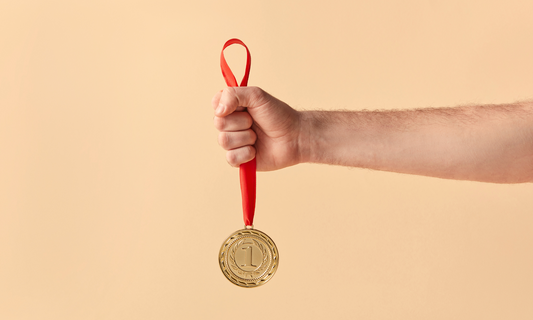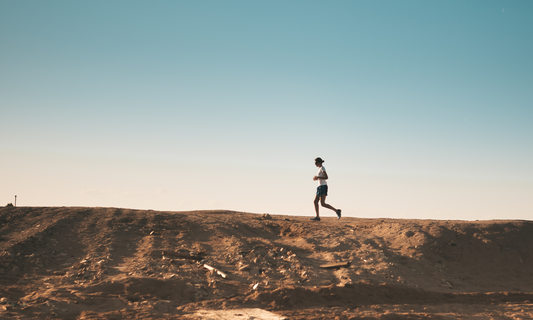Which water should you choose for good sports recovery?

Exercise is beneficial for both physical and mental health, but to get the most out of it, proper recovery is essential. Proper recovery helps prevent injuries, improve performance, and promote muscle growth. In this article, we'll explore the best methods for recovering from exercise.
The importance of recovery after sport

Recovery after an intense workout is crucial to allow your body to regenerate. Here's why it's so essential:
During physical exertion, muscle fibers undergo microtraumas. Recovery is when these fibers rebuild and become stronger . Hydratis solutions will help provide essential minerals to promote this muscle repair. Tired muscles and a poorly recovered body are more susceptible to injury, so this will help maintain a good electrolyte balance, reducing the risk of muscle cramps and injuries related to dehydration.
Effective recovery will allow you to improve the sequence between your sports sessions and maintain your athletic performance.
Sparkling water, mineral water, tap water, bottled water: which one to choose?
Imagine you've just finished an intense cycling session . You've sweated and lost a lot of water and salt (sodium). Now it's time to rehydrate, that is, put water and salt back into your body.
But what is the best way to do this?
A scientific study examined three ways to rehydrate after exercise: drinking mineral or tap water, a sports drink, or a hypotonic drink. Hypotonic water was found to be the most effective because it contains an optimal concentration of electrolytes, especially sodium. Sodium is very important because it's what you lose the most when you sweat. And to rehydrate properly, you need to replace not only the water, but also the lost sodium, which tap water doesn't do. Hypotonic water does this very well because it has a higher sodium concentration than regular mineral water.
Why choose electrolyte-rich waters?
Electrolytes play several important roles in metabolism, particularly in water management. Magnesium is involved in muscle relaxation , potassium in muscle contraction, and calcium in neuromuscular excitability, among others.
As for sodium, it is a key element in post-exercise rehydration. It helps restore fluid balance by facilitating water retention in the body and limiting urinary excretion. Indeed, sodium helps maintain plasma osmolarity, which promotes better water absorption in the intestine and reduces post-exercise diuresis. In addition, sufficient sodium intake after heavy sweating helps prevent hyponatremia, an imbalance that can affect neuromuscular function and blood pressure regulation. Thus, a hydration drink containing sodium will optimize fluid and electrolyte recovery, ensuring a more efficient restoration of physiological functions after exercise.

And guess what? Hydratis offers just such hypotonic solutions! By choosing these drinks, you'll ensure you're effectively hydrated after exercise.
Steps for effective recovery after exercise
Now that we understand the importance of recovery after exercise, let's look at the essential steps for effective recovery!
First of all, it's essential to emphasize the importance of warming up before exercise. A good warm-up will effectively prepare your muscles and joints for exercise, thus reducing the risk of injury. Similarly, regular exercise will be crucial in allowing your body to gradually adapt to the demands of training, thus promoting better recovery.
After exercise, take time to cool down by walking gently or doing some light stretching. Stretching helps relax muscles and reduce stiffness.
Nutrition also plays a vital role in both recovery and minimizing muscle soreness. So, be sure to eat a snack rich in protein and carbohydrates to help repair your muscles. Also, make sure you're properly hydrated.
As for sleep, it's essential for recovery. During sleep, your metabolism performs a lot of repairs and recovery. So make sure you get enough sleep to allow you to fully recover!
Diversifying your physical activity is also key. By varying the types of exercises you do, you'll be engaging different muscle groups, allowing other groups to rest and recover. This will help prevent overuse of certain muscles and therefore reduce the athlete's risk of injury. This principle, called cross-training , can be interesting for those who practice running, and who can, for example, incorporate cycling sessions into their routine. This activity, with less joint impact, helps preserve joints while continuing to develop aerobic and cardiorespiratory capacities.

Finally, it's important to pay attention to the warning signs your body may be sending you about overtraining: insomnia, loss of appetite, persistent fatigue, and irritability are indicators of physical exhaustion. If these signs appear, it's important to reduce the intensity of your exercise and give your body time to recover.
Hydratis products for effective recovery
Now that you understand the importance of recovery and Hydratis products, let's explore how these products can help you maximize your recovery.
Hydrating drinks are essential for maintaining good fluid balance. They provide not only water, but also electrolytes (magnesium, sodium, potassium, and chloride) and trace elements (manganese and zinc). Indeed, Hydratis is used by many athletes to increase their hydration and also helps support and improve their athletic performance, endurance, and also helps reduce the risk of cramps and injuries.
When you sweat, you lose a lot of water and minerals. To stay in top shape, it's important to compensate for these losses! This is why Hydratis is a great ally for athletes: the products optimize and accelerate your hydration in addition to providing you with electrolytes and trace elements.
We recommend dissolving two lozenges in a 500 ml water bottle to be taken throughout the workout, and repeated as often as necessary. In addition, you can drink a glass of water with one lozenge beforehand to replenish your hydration and minerals, and another one afterward to optimize your recovery.

Do not exceed the maximum daily dose which is 5 lozenges for an average adult!
Bibliography
Fan, P. W., Burns, S. F., & Lee, J. K. W. (2020). Efficacy of Ingesting an Oral Rehydration Solution after Exercise on Fluid Balance and Endurance Performance. Nutrients , 12 (12), 3826. https://doi.org/10.3390/nu12123826
Li, H., Early, K.S., Zhang, G., Ma, P., & Wang, H. (2024). Personalized Hydration Strategy to Improve Fluid Balance and Intermittent Exercise Performance in the Heat. Nutrients , 16 (9), 1341. https://doi.org/10.3390/nu16091341
Armstrong LE (2021). Rehydration during Endurance Exercise: Challenges, Research, Options, Methods. Nutrients, 13(3), 887. https://doi.org/10.3390/nu13030887











